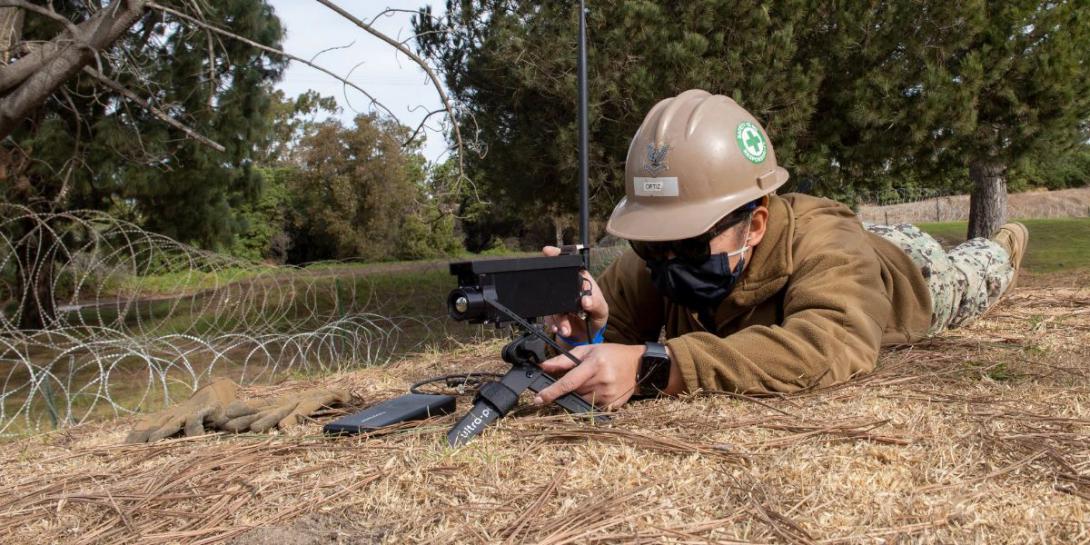AI Offers to Change Every Aspect of Intelligence
Research into artificial intelligence may hold the key to advancing every aspect of intelligence operations. Yet, as extensive as its effects would be, the effort to develop effective artificial intelligence also will require a broad-based coordination among government, industry and academia.
Katharina McFarland, commissioner on the National Security Council’s Commission on Artificial Intelligence, is not hesitant to offer a far-reaching opinion on artificial intelligence’s (AI’s) potential for changing the nature of intelligence. “This technology is almost the equivalent of electricity back in the 1800s,” she says. “I think it’s going to be ubiquitous.”
AI would shift the work focus on human activities away from mundane tasks and toward nonlineal thinking, which computers lack. “When we get to the point where we can use computers to the maximum extent practicable to support a human to do their work, then the sky’s the limit,” McFarland offers.
McFarland sees the use of AI as “almost de facto necessary,” because it will improve many abilities. In processing, for example, computers don’t err as quickly in repetitive tasks as humans do. “Artificial intelligence has multiple applications inside of our intelligence community,” she states.
Among these applications are business systems, particularly for distributing information for review by leadership. This could be done automatically in digital form, which would allow people to review the information in parallel rather than sequentially, she points out.
Analysis, of course, could be enhanced by AI showing alignments that would unveil information or illuminate trending. McFarland describes this capability as “extraordinarily useful. Think of the science and technology information that we need to gather to understand where our adversaries are trending and global trends are for technology itself.
“If I had the ability to tap into open-source information on the web, I can see trends, I can see correlations, I can see things at a much quicker pace because it would be at machine speed,” she adds. “And, I can see the data that would allow the human analysts to look at it from the uniquely human view, which is experiential-based information gathering experiential-based application and experiential-based use.” She notes that there will always be humans engaged at some level in analysis.
One of the first things AI needs is a common understanding of the definition, McFarland says. She points out that anytime a human wants to have something else perform a task, it’s traditionally thought of as AI. Applied to the intelligence community, this could entail almost every aspect of intelligence collection, processing, analysis and dissemination.
McFarland believes that processing will benefit most from AI. Humans want to build confidence before they start an application, she notes, but the greater value of AI to processing will come when users begin to apply it. “We need first to have people trained in it, having folks validate its ability to perform, get the talent in place and then move forward into broader use,” she offers.
One key hurdle for the intelligence community to effectively adopt AI is to get used to using it, McFarland continues. Community members must have the necessary training and build upon it to understand the technology better so they can apply it more effectively. “Advancement in AI will be based on justified confidence in AI’s ability to perform, and that takes starting small and building up,” she declares.
She continues that the areas where humans are error-prone—mathematics, collection and repetitive tasks, for example—could be served by machines naturally walking into that space. And, this is predominantly in the use and application of narrow AI, which tends to be fundamental.
In the collection realm, the intelligence community is hampered by the vast amounts of data it has amassed, and this amount is growing. One of the challenges the community faces is the location of boundaries in data access. AI can help remove those boundaries and generate information from complementary data that otherwise would be siloed. “It would be any type of system we collect on being able to connect … to build relationships through different sets of data,” McFarland suggests. “And when you do, there will be broad awakening on connections that we have done predominantly manually over the last couple of decades.”
As an example, she cites the country’s science and technology base. The convergence of biology and AI is already taking place, but that development went largely unpredicted until it began to form. Siloed information prevented analysts from foreseeing its development among emerging technology trends as commercial practices advanced beyond the government realm.
“For the last three or four decades, we have been focused on kinetic activity,” McFarland observes. “We are seeing nonkinetic destabilizing activities on the rise over the last couple of decades. They’re part of the technology that would allow us to track, to identify, to mitigate and help build policy around the new environment of how we are ‘attacked’ in the new world.”
To arrive at the point where AI can begin to transform intelligence will require several steps. McFarland notes that current AI operates in a narrow spectrum, but that hasn’t even been adopted to speed up processes in the federal space. In some cases, bureaucratic systems themselves are the impediment to adoption, she states. Acquisition, in particular, is commodities-based, and the country has yet to adapt the system to address this different type of acquisition.
She notes that the artificial intelligence commission broke down its recommendations into two phases: AI readying and AI enabling. Key to these efforts is the linkage among AI and other technology disciplines.
The first pillar for action is leadership, and this would have a broad effect. “We need to establish a whole-of-government approach for technology competitiveness,” she warrants. A technology competitiveness council would be chaired by the vice president and feature cabinet members, and this makeup would emphasize that the United States is not just in a kinetic war for its future. “We need to win the technology competition to set ourselves up and be able to operate,” she emphasizes.
The second pillar would establish an exchange process between the Defense Department and the intelligence community. This would focus on generating talent to bring in digital experts as part of an education renaissance.
The third pillar would focus on hardware.
“We need to have the ability to ensure we are two generations ahead of, for example, China,” McFarland warrants. She continues that Taiwan, which is the source of much of the semiconductors used by the United States, is only 110 miles off the coast of China, which is the chief peer adversary to the United States. That degree of semiconductor capability must be “brought ashore,” as she notes that the COVID pandemic highlighted the shortcomings of the supply chain.
The last pillar is innovation. McFarland says the United States leads the world in innovation, but the nation doesn’t adapt quickly enough. “We need to invest, and the report calls for increasing federally funded research and development for AI. “That is fundamental for what we are talking about—the underpinning for those things,” she stated.
All these pillars would be “urgently at the top” for AI readying, she offers.
This effort is targeted for the year 2025, she reports. While this may seem too ambitious, McFarland points out that China has invested billions of dollars in AI in a long-term decade-old plan. “We are challenged, and we must move out,” she allows. “There is a sense of urgency even within the timeframe.”
This urgency includes investment. Venture capital engines such as In-Q-Tel will need to fund innovation in AI to regain initiative in AI research. “We must regain our foothold and our stronghold,” she maintains. “The pillars of the government are not defense alone when it comes to national security. It’s the economy, stupid.
“All of them must contribute and partner to be able to make this change,” she continues. “It’s not government-only.”
Computing will be a key part of AI advances, particularly quantum computing. This and other computing developments will enable the intelligence community to attain the goals dependent on AI.
Over the next five years, hardware advances will be more crucial than software, she offers. After that, algorithms will overtake it in prominence. Once next-generation chips and hardware are in use, then algorithm development will assume greater importance. “[We must] develop our understanding of how to implement our value system through the algorithms to protect what we have frankly … been asleep at the wheel about,” she states.
And developing AI along the lines of the U.S. value system is one of the most important aspects of its incorporation into the intelligence community. “We as a nation will obviously write our algorithms to our [guarantees] of freedom,” she declares. “We look at things through the system of what we’ve had a great deal of experience in.”







Comments